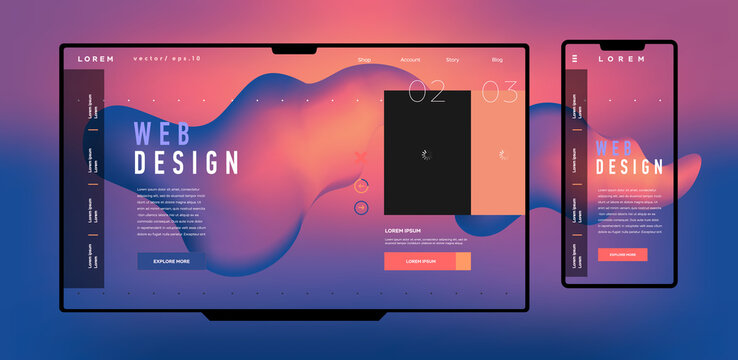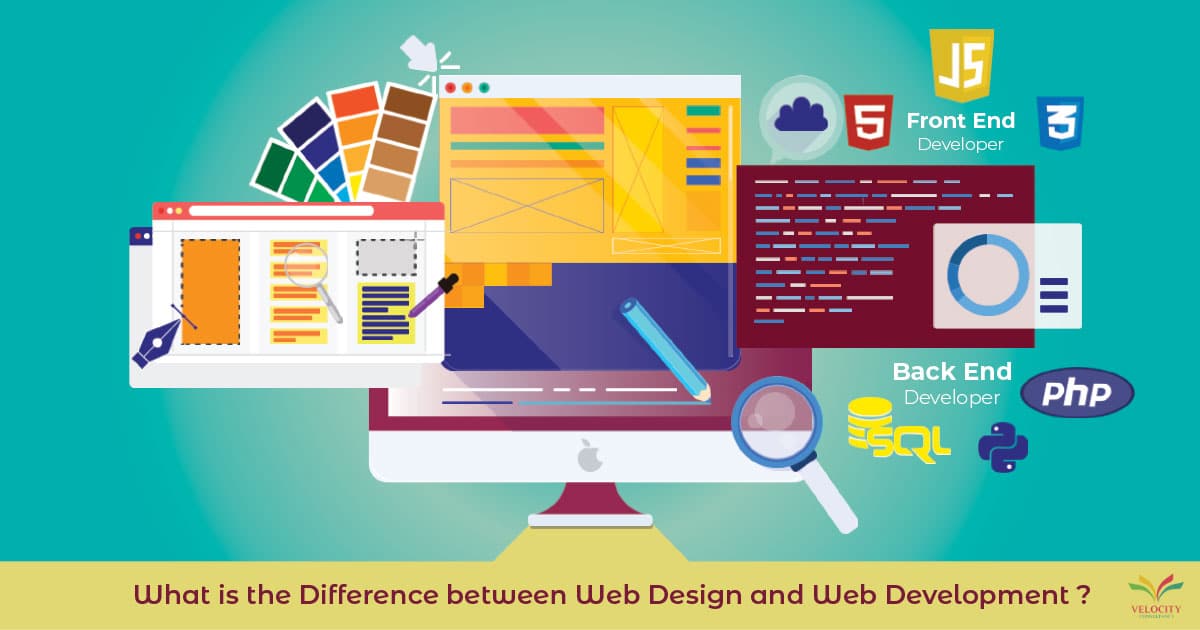How to Properly Incorporate Looks and Capability in Website Design
When making a site, you need to strike an equilibrium in between aesthetics and performance. It's not simply concerning looking excellent; your design should also offer an objective and overview users efficiently. By concentrating on simpleness and intuitive navigation, you can create an interesting experience. But what elements genuinely enhance usability while maintaining visual appeal? Allow's check out the vital concepts that can result in a harmonious blend of charm and feature.
Comprehending the Importance of Aesthetic Appeals and Performance
When you develop a web site, recognizing the balance in between visual appeals and capability is essential for developing a reliable customer experience. A visually enticing website grabs attention, however it's the capability that maintains customers involved. If your site looks great yet is tough to navigate, site visitors will promptly lose passion and leave.Consider your target market and what draws them in. You intend to create a layout that mirrors your brand while making sure simplicity of usage. Structured layouts, instinctive navigating, and clear phone call to activity can enhance both aesthetics and capability.

Principles of Reliable Web Layout
To produce an effective website design, you need to stick to several vital principles that enhance both customer experience and visual allure. Focus on simplicity; a clean format assists customers browse conveniently. Use a constant color pattern and typography to preserve coherence across your website. This cultivates familiarity and trust.Next, assure your design is responsive. Customers access internet sites on different tools, so your design must adapt perfectly. Take notice of visual pecking order; emphasize vital elements with shade, placement, or size to guide individuals' focus.Finally, integrate enough white space. It prevents mess and makes content a lot more digestible. Bear in mind, reliable web design balances aesthetics and functionality, so every style selection must offer a purpose. By complying with these concepts, you'll produce a website that's not just aesthetically enticing yet additionally user-friendly, inevitably maintaining site visitors involved and motivating them to return.
Focusing On Individual Experience
When focusing on customer experience, you'll intend to begin by comprehending what your individuals really require. Streamlining navigating style can make a massive distinction in exactly how quickly they discover what they're searching for. Boosting visual hierarchy helps guide their focus to the most crucial elements on your website.
Comprehending Individual Requirements
Understanding customer needs is vital for creating an interesting web experience that maintains visitors returning. To attain this, you have to identify the objectives and preferences of your target audience. Beginning by carrying out customer research, like studies or meetings, to collect understandings on what users worth most. When interacting with comparable internet sites, pay attention to their discomfort factors and challenges. This info permits you to tailor your style, making sure functionality lines up with customer expectations. Additionally, think about developing user personalities that stand for various sectors of your audience, helping you visualize their requirements throughout the layout procedure. When you focus on understanding user requirements, you develop an internet site that not only looks terrific however additionally supplies a seamless, enjoyable experience that fosters loyalty.
Simplifying Navigation Layout

Enhancing Aesthetic Pecking Order
A strong visual pecking order is vital in directing users via your web site and ensuring they involve with key web content. To attain this, utilize spacing, dimension, and color purposefully. Make vital aspects like headings larger and bolder than body message, drawing focus instantly. Make use of contrasting colors to highlight calls to activity, encouraging clicks. In addition, employ ample white area to separate areas, making content absorbable and inviting.Consider the flow of details; prepare aspects logically, leading customers' eyes from one point to the following. Use aesthetic hints, like arrows or lines, to direct interest. By focusing on visual hierarchy, you improve customer experience and boost the likelihood of conversions, ensuring your internet site is both visually pleasing and functionally reliable.
Color Concept and Its Influence On Functionality
While picking the best shades for your website may look like a small detail, it substantially influences functionality and customer experience. Color impacts just how users view details and can enhance or prevent navigation. Contrasting colors can help essential aspects stand out, making it much easier for site visitors to discover what they need.Additionally, take into consideration the psychology of shades: blue often inspires count on, while red produces seriousness. Understanding your target audience can assist your shade selections, guaranteeing they resonate well.Moreover, consistent color pattern help build brand identity, making your website more memorable. Nevertheless, beware-- as well lots of colors can overwhelm users. Adhere to a minimal scheme that enhances your content and keeps clarity.Incorporating availability is additionally essential; validate your shade combinations are pleasant for those with aesthetic impairments. By attentively using color concept, you'll boost usability and create an extra appealing user experience.
Typography: Balancing Design and Readability
Color choices established the phase for your web site, however typography plays an equally essential duty in improving user experience. You desire your message to communicate plainly while likewise reflecting your brand name's character. Begin by choosing typefaces that are not only attractive yet also understandable. Sans-serif typefaces commonly work well for digital displays, as they're easier to review at different sizes.Maintain a power structure by making use of different typeface sizes and weights; this overviews users via your web content effortlessly. Think about line spacing and letter spacing; too tight can frustrate visitors, while too loose can interrupt the circulation. Limit your typeface choices to 2 or 3 to keep the design cohesive.Finally, constantly test your typography across various devices and internet browsers. What looks good on one display might not on an additional. Balancing style with readability warranties that your message resonates, maintaining your audience notified and involved.
Receptive Design: Making Aesthetic Appeals Work With All Gadgets
To ensure your web site looks great on any kind of tool, you'll require to accept responsive design concepts. This strategy assurances your site adapts to different display dimensions, offering a perfect user experience. Begin by utilizing fluid grids and flexible pictures that scale effortlessly. As opposed to fixed measurements, choose portions and family member systems, permitting your format to readjust dynamically.Next, execute media queries in your CSS. These let you apply various designs based upon tool qualities, like display size. This means, you can keep visual charm while ensuring functionality.Don' t forget touch targets; make certain buttons and links are very easy to touch on smaller sized displays. Prioritize crucial content, so customers can easily browse your website no matter their gadget. By concentrating on these components, you'll create an engaging, visually appealing experience that fulfills the demands of all individuals, whether they're on a tablet, desktop, or smart device .
Performing Functionality Testing for Continuous Renovation
To improve your web layout, you require to set clear usability objectives that line up with user demands. By carrying out user examinations, you can gather valuable responses on exactly how real individuals communicate with your site. Assessing these outcomes will aid you make notified improvements and develop a much more effective user experience.
Specifying Functionality Goals
While appearances can attract users in, specifying usability objectives is vital for ensuring their experience continues to be enjoyable and seamless. Beginning by identifying what you desire individuals to attain on your site (website design london Ontario). Consider their actions, demands, and tasks. Are they trying to find information, purchasing, or enrolling in an e-newsletter? Establish clear standards to gauge success, like task conclusion prices or time on task. Focus on intuitive navigating, obtainable content, and responsive layout to enhance functionality. On a regular basis review these objectives as individual assumptions progress. By defining functionality goals, you develop a framework for examining and boosting your website's efficiency. This concentrate on usability not just enhances user contentment but also strengthens the general efficiency of your design
Carrying Out User Tests
Carrying out customer examinations is essential for refining your website and guaranteeing it fulfills your target market's demands. Beginning by recognizing your target customers and developing an examination plan that outlines your objectives. Use a mix of measurable and qualitative approaches, such as studies, interviews, and task-based observations, to collect detailed feedback. Invite individuals to browse your site while you observe their interactions and keep in mind any kind of difficulties they run into. Urge open dialogue to record their ideas and feelings concerning the layout and capability. Keep sessions short and focused, guaranteeing you cover crucial areas without overwhelming users. Ultimately, ensure to document all searchings for, as this details will be indispensable for making informed style decisions that enhance both appearances and functionality.
Evaluating Test Outcomes
How can you properly evaluate the outcomes of your functionality examinations to drive constant improvement? Begin by categorizing comments right into common styles. Look for patterns in individual behavior that highlight pain factors or areas for improvement. Usage quantitative data, like job conclusion prices and time on task, to determine usability fairly. Do not neglect to take right into account qualitative insights from individual remarks; they usually expose underlying concerns that numbers can't show. Focus on one of the most impactful findings and create actionable things for your design team. Keep in mind, it has to do with iterating-- carry out adjustments, then examination once more. This cycle of testing, examining, and refining aids you equilibrium appearances and functionality, ensuring your internet site meets customer demands efficiently while keeping aesthetic allure.
Frequently Asked Questions
How Do I Select the Right Shade Scheme for My Site?
To select the ideal shade combination for your internet site, consider your brand name's individuality, target audience, and emotional effect (website design london Ontario). Usage color psychology, produce consistency, and assurance readability. Test combinations to see what reverberates ideal with site visitors
What Equipment Can Assist With Internet Layout Appearances and Capability?
You can website utilize devices like Adobe XD, Figma, and Map out to enhance your web design's visual appeals and functionality. These platforms supply instinctive user interfaces, collaboration functions, and pre-made themes to enhance your imaginative process and boost your styles.
Just How Can I Include Animations Without Endangering Performance?
To incorporate animations without endangering functionality, focus on subtle effects that boost individual experience. Use CSS animations for smoother communications, warranty quick load times, and examination on different devices to preserve performance while including visual appeal.
What Are Usual Errors to Avoid in Website Design Aesthetics?
When making, prevent cluttered designs, poor shade choices, and inconsistent fonts. Do not neglect mobile responsiveness, as it can alienate individuals. Confirm your layout lines up with your brand, creating a seamless experience that involves visitors efficiently.
How Frequently Should I Update My Site's Style for Optimum Aesthetics?
You must update your web site's design every 1-2 years to stay up to date with fads and preserve ideal appearances. On a regular basis renewing visuals assists involve assurances and site visitors your site stays enticing and easy to use. When you design an internet site, understanding the balance in between aesthetics and performance is crucial for creating an efficient customer experience. To create an effective web style, you require to stick to numerous essential principles that improve both individual experience and aesthetic allure. Customers accessibility websites on various devices, so your style must adjust flawlessly. When focusing on user experience, you'll want to start by comprehending what your customers absolutely require. Beginning by conducting user study, like interviews or surveys, to gather understandings on what customers worth most.
Comments on “Web Design London Ontario Packages for Every Budget”